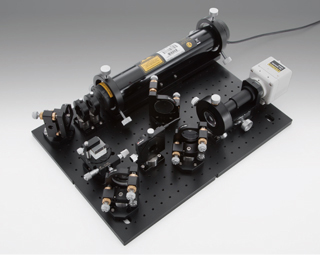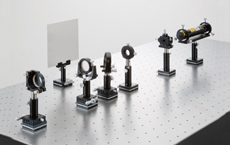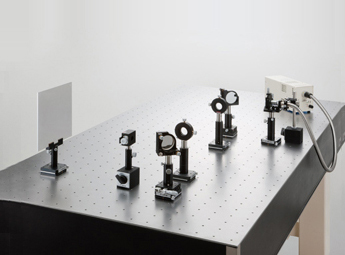
Various researches nowadays use interferometers as increasing numbers of experiments require higher accuracy.
Here, we introduce interferometers used at each stage from basic learning for beginners to verification of principles
or productization tests, as well as the schlieren optical system.
A interferometer unit used in the field of education or for teaching practice.
Users can freely change component arrangement to assemble various interferometers.
It can also be used for simple verification experiments, and is an indispensable item for optical training.
An optical system that is one step more advanced than the general interferometer, and slightly closer to an optical instrument.
It is useful for verifying both functionality and compactification.
This optical system enables observation of minute samples that the general interferometer cannot check.
It is often confused with an interferometer, but we redesigned the schlieren optical system,
which is used for quantitative observation of fluid.
We used white light as the light source to enable observation of subtle contrast,
and a configuration that allows loading of observed images into a PC.
Interferometer used in experiments for observing reflection wavefronts or phase change in interference fringes
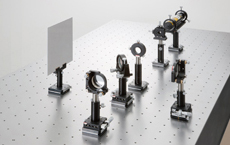
Interferometer with a single optical path, used for observing transmitted wavefronts or for experiments that insert acousto-optic modulators (AOM)
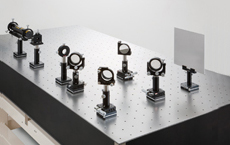
You can create a table-top type interferometer for observing transmitted wavefronts of minute samples using the existing holders.
This is a new proposal from Sigma Koki.
